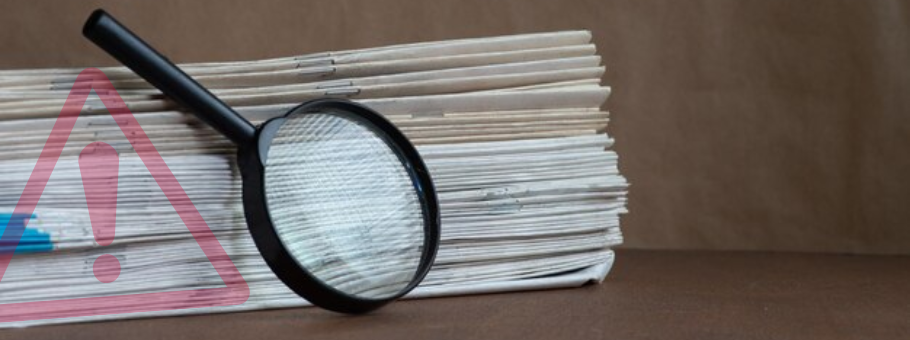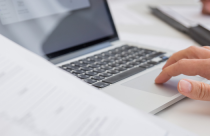Know More About Publication Ethics: An Interview With Christina Bennett (Part 2)

 In the final part of this interview series, Christina provides some insights on ethical misconduct among ESL authors and highlights some useful tips that would help early-career professionals understand the implications of misconduct. During the interview, she also shares the challenges faced by journals/publishers in resolving disputes regarding ethical misconduct. She also shares some thoughts on the various resources used by her to remain updated on the ethical policies of publishing and the future challenges that need to be overcome in identifying ethical and research misconduct in the coming decade.
In the final part of this interview series, Christina provides some insights on ethical misconduct among ESL authors and highlights some useful tips that would help early-career professionals understand the implications of misconduct. During the interview, she also shares the challenges faced by journals/publishers in resolving disputes regarding ethical misconduct. She also shares some thoughts on the various resources used by her to remain updated on the ethical policies of publishing and the future challenges that need to be overcome in identifying ethical and research misconduct in the coming decade.
Kuntan: In your experience, have you noticed a higher incidence of ethical misconduct from non-native English-speaking authors versus English-speaking authors?
Dr. Christina: I don’t think that we have. In general, we have just as many cases that are U.S.-centered as non-U.S.-centered. Each year, when we check on this we notice that within a few percentage points, about half of our issues come from outside the U.S. and half from within the U.S. With most papers, there are so many authors that we can’t differentiate whether the first author or the last author is a native speaker or not. But, I don’t think that ethical issues are limited or specific to any one group of people. Every journal has its own set of standards, and so every time an author prepares to submit a paper, he or she has to follow the guidelines of the journal to which he or she is submitting and so errors can happen at any time. Hopefully, they are errors due to lack of knowledge and not due to the intent of deceiving somebody. In every incident, we try to educate the people involved about what the policy is and why it might not have been adhered to appropriately, and then we try to find a way to address it. The cases in which people do something intentionally should, ideally, be extremely rare. However, if you are found to have engaged in such an intentional act, it will be addressed firmly—it doesn’t matter what country you come from.
Kuntan: In your opinion, do young scientists understand the repercussions of misconduct—for their career or for the scientific field—when they indulge in such activities?
Dr. Christina: When I was a research scientist, I focused on doing my research right, so I didn’t ever think about misconduct. I was doing my work in the right way and was preparing it to be as beautiful as it could be, and I wanted to share my work in a publication. My impression is that a lot of the figure manipulation and plagiarism that we see occurring is partly because people are trying to submit the best work that they can submit. For example, somebody has already stated a fact in an excellent way, so the author may reuse the fact or the sentence because it’s already been said perfectly. Or in some cases, an image may be pretty good, but people think that if they erased a little bit of it—a piece of dirt or something—it might be better. I don’t think people are necessarily thinking about repercussions in these cases, because they may not realize that these actions violate our standards that the work must be original and that images must be presented as they were captured.
A camera image should look just as it did when it came from the camera at the time of the experiment. It shouldn’t be Photoshopped to a point where it looks like a totally different experiment. And if the experiment didn’t work, then it shouldn’t be modified to show what things would have looked like had the experiment worked. In many cases, I don’t think there is any intent to perform misconduct; however, there is a lot of pressure on young investigators and even on professors early in their career to publish. So if there’s that one last experiment that doesn’t look quite right, everyone has to make the decision whether to repeat the experiment or change the contrast a bit to make the experiment look a little bit better than it really came out. Those are the types of real-life situations that arise. I would hope that people aren’t taking conscious steps to actively engage in misconduct.
Timelines are another source of pressure. People are supposed to graduate within four to five years and in many instances there is an issue of promotion—you want to go on to do a post-doc or to get a professorship, and there is great pressure to get a lot done within a very limited time. So when experiments don’t work for months, you are faced with questions as to how much you’re going to struggle and how you’re going to make things work. I was there once, so I feel for every student who is trying to publish because it is stressful; however, you also want to feel very comfortable at night knowing that the work you did will be well received and that what you showed in your paper can be reproduced. These are some of the questions that you have to continue questioning yourself—is this work strong enough that it should be reported and shared with the rest of the community?
Kuntan: What advice would you give researchers to practice good science and avoid any misconduct?
Dr. Christina: The main thing is just to be honest with your work. When you’re doing the experiments, consider whether the results are true and valid. Did the experiment work and did your controls work? Should that experiment be repeated? Has it been properly analyzed? If the answers to all these questions are yes, then you can use this data as part of your broader story. When it comes to publishing, it is really important to look up the author information and ethical policies for whichever journal you are submitting to and read those policies before you submit. Most journals follow similar guidelines, but each one is a little bit different. It is important to look at those guidelines well before you publish, because as you prepare your paper, you want to make sure that your data is going into the right repositories, your images are being prepared according to the journal’s standards, your text is being written in compliance with how the journal defines plagiarism and things like that. Authorship guidelines are also important as to how they define authorship, whether they define contributors and authors separately, or what should go in the acknowledgment section. There are also issues with conflicts of interest—how you report your interactions with companies or other private organizations that may be paying for your research. All those things should be taken into consideration early, as opposed to after publication when the journal writes to you saying that something was not fulfilled properly.
Kuntan: In your opinion, what is the role of peer review in looking for ethical concerns?
Dr. Christina: We try to allow our reviewers to focus on the science and not so much on our policies or ethical guidelines. That being said, many of our reviewers will detect possible problems with images or portions of the paper that were published previously. They are really good at finding pieces of data that have appeared in the author’s prior works or had been submitted to another journal, sometimes because the same reviewer may have seen the same work twice at the same time. So although we don’t mandate that they look for ethical issues, because we really want them to focus on whether the science is good or not. If so, they bring it to the attention of the associate editor, who then brings it to my attention.
Kuntan: Are there any specific tools or software available for publishers to catch ethical concerns or any scientific misconduct in a paper?
Dr. Christina: There are no specific tools for misconduct per se, but we do have tools to use with Adobe Photoshop that allow us to take a more forensic look at photographs. These tools are freely available from the NIH’s Office of Research Integrity on their website. There are types of macros that go into Photoshop and help us look more closely at photographs. We also use iThenticate for plagiarism issues. Those are the two main tools that we use in order to determine whether a concern is justifiable.
Kuntan: So how do you keep yourself up-to-date with ethical policies for publishing as well as taking care of ethical issues that arise during the process of publication?
Dr. Christina: There are a number of good resources for publication ethics. One of them is COPE, the Committee on Publication Ethics. Their website is fantastic for helping editors to address ethical issues. It is also a good resource for authors to see how journals should handle ethical issues, because sometimes a problem may arise and an author may not know whether to contact the journal and make an editor aware of it, or whether the concern is valid. There are also some blogs that monitor retractions. Retraction Watch is one blog that I subscribe to. It keeps me up-to-date on famous authors as they become infamous for misconduct. I can keep an eye on whether any of these authors are active in our journals. Then there is also PubPeer, which is an online “post-publication journal club,” as they describe it. If a reader has questions about anything within a manuscript, the reader can present the question to the author and also inform the journal through this blog. This is one way in which we become informed of a concern about misconduct if we get a message from PubPeer saying that someone has raised a concern. There are also industrial communities, the Council for Science Editors, and ISMTE. All these organizations provide information on issues that other journals are facing. This is a nice way to determine if maybe we too are having issues with authors failing to give us information about a certain aspect of their work. If a problem is happening in other journals, then we can work together to find a way to make the guidelines clearer or make relevant resources more accessible for our authors.
Kuntan: My final question is, what are the future challenges that you see in avoiding misconduct and ethical issues, say in the next 10 years or 20 years?
Dr. Christina: I think that we will always have ethical issues and how we detect them may have to change as technologies change. We may be using tools that are too old at some point, or we will have to keep changing with the times to make sure that the tools that we use can detect the ways in which people may manipulate data in the future. In terms of some of the text-related issues, such as publishing articles multiple times or data duplication, things may be getting somewhat easier as more eyes are looking at papers, we have some blogs and websites involved, and PubMed Commons allows people to make comments about articles. If somebody raises a concern today, it can become public knowledge very quickly, and then more eyes look at a paper that’s been flagged. In this way, errors might be revealed even faster in the future than they are now. So in some ways, technology is fantastic for helping us identify problems. In other ways, it may slow journals and other guardians of the literature down a bit as we try to make sure that we are up to date on how to assess potential problems.
(This interview is a part of our interview series of connecting scholarly publishing experts and researchers.)









